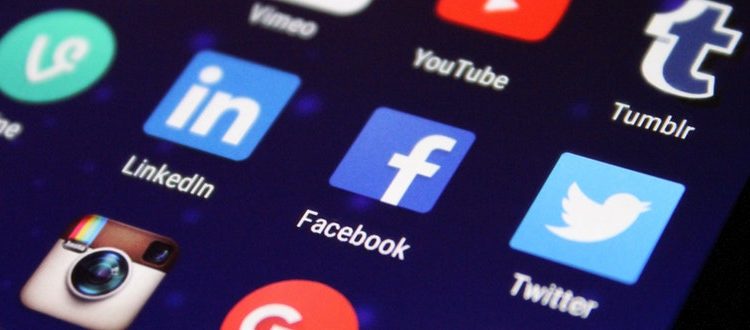Twitter for Research: Tweet Your Research to Succeed!

About 15 years ago, a social media network called “Friendster” launched. It was a forum where people of similar interests could communicate and share ideas. Since then, networking sites have blossomed. In 2003, “LinkedIn” launched and now it has nearly 300 million members. During that same period, other social media sites, such as “Facebook” and “Twitter,” began to receive a huge share of the social media market.
Evolution of Social Media
Scientists have taken advantage of the communication opportunities of social media. Although they have regularly used sites such as ResearchGate and Academia.edu, they are now using Facebook and Twitter to connect with colleagues. Twitter is now the most popular social media site that they use.
The concern now is the effect that this increased use of Twitter has on the scientific community as a whole, particularly when referencing published papers in academic journals. By citing studies on Twitter, does its increased use send a false message about the interest in or importance of the studies?
To address these questions, a team of researchers conducted a study on the impacts of “tweeting.”
The Study
In August 2017, the results of a study entitled “The unbearable emptiness of tweeting—About journal articles” by researchers Nicolas Robinson-Garcia, Rodrigo Costas, Kimberley Isett, Julia Melkers, and Diana Hicks was published in PLOS ONE, a multidisciplinary open-access journal. The study evaluated only one discipline—dentistry—to assess whether tweeting about published papers has value in terms of recognition and interest in a study by colleagues.
The researchers used the top 10 published papers on dentistry that were most frequently tweeted. They found the following three patterns of most tweets; each is discussed separately below:
- Single issue,
- Social media account management, and
- Broader tweeting.
The study used data from the Web of Science (WoS) and PubMed, which indexed 84 and 47 journals, respectively, in dentistry disciplines. This particular study was part of a larger study that looked at sources and channels of information in the dentistry disciplines. Thus, this study concentrated on only those dentistry papers that originated from the U.S.
All journal references that were indexed in WoS and PubMed were downloaded. Another database, Almetric.com, was used to specifically find tweets about the papers. The PubMed and WoS identifiers were cross-checked with Almetric.com. While the former two databases track actual literature citations, Almetric.com tracks how many mentions an article receives on social media. It also tracks how many times those mentions provide links to the paper. Because Twitter is such a popular resource for scientists, Almetric.com uses it to compile its database.
Study Results
Within the five years studied (2011 to 2016), the researchers identified more than 2,200 individual Twitter accounts that composed tweets on more than 4,300 papers. The tweets were analyzed as follows:
- Number of tweets compared to the number of WoS citations,
- Number of tweets about the paper,
- Number of accounts tweeting about each paper,
- Number of text variants represented in the tweets, and
- Number of tweets beginning with “@”.
They then whittled the list down to the top 10 papers that were discussed on Twitter. As mentioned above, the tweets were divided into the following three categories.
Single issue
Single-issue tweets, as the name suggests, are tweets that focus on one issue. One paper on the use of acetaminophen appeared to be at the top of the list for single-issue tweets. It received 264 U.S.-based tweets, a high score according to Altmetric.com; however, about 73 percent of those were from only one account. That one source linked it 65 times to his own paper on the same subject.
There were several other articles that fit into this tweet category; however, none had the same number of tweets or the level as the first on the list.
Social media managers
Given that Twitter was launched in 2006, there were not many papers (about six percent) published earlier that were tweeted. Even so, in 2016, one paper published back in 1982 was tweeted 51 times. Shortly after its first tweet, there was a barrage of additional tweets on this one paper, but they happened to be identical.
The researchers believed that this phenomenon was the result of the dentists with Twitter accounts hiring the same firm to manage their accounts. Even though these accounts are used for communicating with patients, the account managers were merely copying and reposting what’s called “bookworm text” over and over. Although these managers promised “original” text to their clients, in reality, they just copied the same text and reposted it.
Broader tweeting
This third tweeting pattern appeared to provide evidence of an actual interest within the group of tweeters for the papers cited. One of the top papers cited was from 41 separate accounts. These appeared to be legitimate separate tweets from interested parties.
Good or Bad for Published Papers?
Whether using Twitter to tweet about scientific research is beneficial is subject to one’s opinion. One author believes that tweeting allows open communication with colleagues. They can share ideas and thoughts about new research and discuss the value of older research. He does doubt, however, that Twitter has had any positive influence on the impact of published papers within the discipline studied.
Given the results of the above study, the amount of tweeting overlap is huge; therefore, relying on the levels measured as significant might not be a real metric for assessing the interest in the article. The researchers stressed that caution should be taken when assessing the tweet numbers. When duplicates and overlapping tweets are removed from the database, few are left on each paper. This should be a clue about the basis of a paper’s following.
They also caution that relying on the often-inflated tweet counts for assessing interest might lead scholars to do research only on those types of interests and abandon other interesting topics. This would be a huge negative impact on research in any discipline.
Have you used Twitter to tweet about your research? Has it helped in increasing the exposure of your paper? Share your thoughts with us in the comments below!









